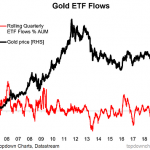The Federal Reserve delivered a hawkish hike. The dot plot reflects expectations for four rate hikes in 2016. There were no dissents. This is important. It underscores the decisiveness of the decision. There have been three voting Fed members that were thought to be likely dissents. The Fed will also continue to reinvest maturing securities until the normalization process is well underway. We think it may be an issue near mid-year at the earliest.

We recognize that some think that failure to adjust the balance sheet gives it a dovish cast, but this never seemed like a realistic possibility.The risk factors that are cited are not new.
The Federal Reserve’s economic assessment was little changed. It did downgrade its inflation assessment by noting that the “survey measures of longer-term inflation expectations have edged down.” In September, they had said they were stable.
Ironically, even though it is the first hike in nearly a decade, the most important thing is the Fed’s guidance for the next move. The Fed continues to signal a hike every quarter, and this is their definition of gradual. While the Fed remains data dependent, they appear to be willing to cast a wide net in terms of the economic data they will monitor, including financial and international developments.
At the same time, the shortfall in inflation received special attention, which may have been needed to win over the dove. The FOMC statement said, “…the Committee will carefully monitor actual and expected progress toward its inflation goal.” We do expect core inflation to trend higher, lifted by medical and shelter costs.
We note that the December Fed funds futures contract have hardly changed, implying an effective average rate of 23 bp this month. This underscores our skepticism of how the contract is commonly interpolated.
Foreign exchange and debt trading have been choppy in the immediate aftermath of the FOMC statement. We reiterate the concern we expressed earlier this















Leave A Comment